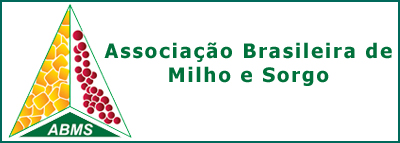PRODUTIVIDADE DE GRÃOS E PARÂMETROS FISIOLÓGICOS DE SORGO GRANÍFERO SOB DEFICIÊNCIA HÍDRICA E IRRIGAÇÃO PLENA
DOI:
https://doi.org/10.18512/1980-6477/rbms.v16n3p361-372Keywords:
Sorghum bicolor, teor de clorofilaAbstract
RESUMO - O presente trabalho objetivou avaliar híbridos de sorgo granífero em condições com (CDH) e sem restrição hídrica (SDH) em Teresina-PI, buscando identificar híbridos mais tolerantes ao déficit hídrico. Foram avaliados doze híbridos comerciais (DKB 599, BRS 330, AS 4610, BRS 380, BRS 309, AG 1040, BRS 310, DKB 551, 1 G 282, 50 A 50, BRS 305 e BRS 373), utilizando-se delineamento de blocos ao acaso, com quatro repetições, entre os meses de setembro e dezembro de 2012. Os tratamentos foram dispostos em esquema fatorial 2 x 12 (regimes x híbridos). O manejo de irrigação baseou-se na evapotranspiração da cultura. Foram determinados o índice de área foliar (IAF), o teor relativo de clorofila na folha (TCF), a eficiência de uso da água (EUA) e a produtividade de grãos. O cultivo de sorgo granífero CDH apresentou redução de 38,1% e 36,4% no IAF, nas leituras aos 63 e 98 dias após a semeadura, respectivamente; 9,3% no TCF e 33,1% na produtividade de grãos em relação ao sorgo sob SDH. Em média, a EUA na condição de déficit hídrico foi superior em 7,13%. Os híbridos BRS 305 e 1G 282 foram os mais produtivos na condição de restrição hídrico, mostrando-se também responsivos à melhoria do ambiente.
Palavras-chave: Sorghum bicolor, tolerância a seca, área foliar, teor de clorofila.
GRAIN PRODUCTION AND PHYSIOLOGICAL PARAMETERS OF GRAIN SORGHUM UNDER WATER DEFICIENCY AND FULL IRRIGATION
ABSTRACT - Twelve commercial sorghum hybrids were evaluated under two water regimes: water deficit (WD) and full irrigation (FI), at Embrapa Meio-Norte, in Teresina, State of Piauí, Brazil, from September to December 2012. The hybrids DKB 599, BRS 330, AS 4610, BRS 380, BRS 309, AG 1040, BRS 310, DKB 551, 1 G 282, 50 A 50, BRS 305 e BRS 373 were evaluated using complete randomized blocks with four replications. The irrigation management was based on crop evapotranspiration. The irrigation applied summed to the rainfall amounted 484 mm and 302 mm for FI and WD environments, respectively. The leaf area index (LAI), the relative chlorophyll content in the leaf (RCC), water use efficiency (WUE) and grain yield were determined. The sorghum under water deficit decreased by 38.1% and 36.4% in the LAI, respectively, in the readings at 63 and 98 days after sowing; 9.3% in the RCC and 33.1% in grain yield compared to sorghum under full irrigation. The WUE under water deficit was in average 7.13% higher than under full irrigation (FI). The hybrids BRS 305 and 1G 282 showed phenotypic characteristics of drought tolerance and responsiveness to irrigation for grain production.
Keywords: Sorghum bicolor, drought tolerance, leaf area, chlorophyll content.
Downloads
Published
How to Cite
Issue
Section
License
Authors retain copyright and grant the journal right of first publication with the work simultaneously licensed under the Creative Commons Attribution License that allows the sharing of work and recognition of the work of authorship and initial publication in this journal.
Authors are able to take on additional contracts separately for non-exclusive distribution of the version of the paper published in this journal (eg, in an institutional repository or publish as a book), with acknowledgment of its initial publication in this journal.
Authors are permitted and encouraged to post their work online (eg, in institutional repositories or on their website) at any point before or during the editorial process, as this may leadto productive exchanges, as well as increase the impact and citation of published work.



